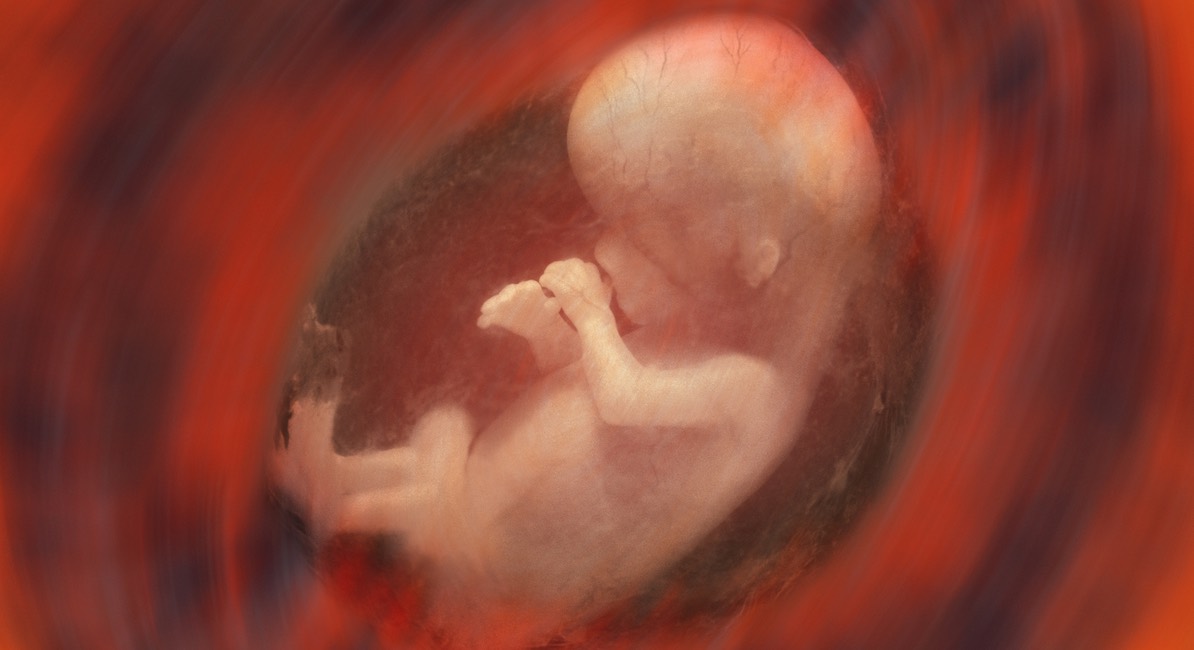Major media outlets have been attempting to discredit Live Action’s “Baby Olivia” video, which offers a medically accurate, animated look at life in the womb beginning at the moment of fertilization. Though “Baby Olivia” has the support of doctors and medical experts, The Washington Post described the video as “not technically wrong but potentially confusing,” because it uses fertilization to date the pregnancy rather than the date of a woman’s last menstrual period (during which a child has not yet been conceived). It claims that this two-week difference is “morally significant” in the abortion debate, while it dehumanizes the preborn child at every turn.
But there is no morally significant difference between a human embryo and a human newborn. They are both equally human and equally worthy of protection.
Patrick Lee (a John N. and Jamie D. McAleer Professor of Bioethics and Director of the Institute of Bioethics at the Franciscan University of Steubenville), along with Robert P. George (McCormick Professor of Jurisprudence and Director of the James Madison Program in American Ideals and Institutions at Princeton University and a member of the United States President’s Council on Bioethics and the United Nations Educational, Scientific and Cultural Organization World Commission on the Ethics of Scientific Knowledge and Technology) note in a study:
The human embryo is the same individual as the human organism at subsequent stages of development. The evidence for this is the genetic and epigenetic composition of this being—that is, the embryo’s molecular composition is such that he or she has the internal resources to develop actively himself or herself to the next mature stage—and the typical embryo’s regular, predictable and observable behaviour—that is, the embryo’s actual progression through an internally coordinated and complex sequence of development to his or her mature stage.
The study continues, “[T]o destroy a human embryo is precisely to destroy a new, distinct and complete human organism, an embryonic human being.”
Some images below may be disturbing to readers.
The heart
The Washington Post attempts to dehumanize preborn children by denying fact.
It quotes Michael Belmonte, an OB/GYN and fellow at the pro-abortion activist group the American College of Obstetricians and Gynecologists. Belmonte attempts to downplay an embryo’s heartbeat as the Post reports, “The video’s ‘heartbeat’ mentions are also problematic, he said, because the heart would not yet be developed at the point that Live Action claims. He noted that the video uses the sound of a fully developed heartbeat, rather than the electrical impulses that would actually be heard.”
However, the heart is the first organ that begins to function and at three weeks is working to pump blood to the rest of the embryo, though it does not yet have four chambers. Doctors and scientists confirm this. The heart is an electrical system and the beat is electrical impulses, but since some people struggle to imagine any person without a heartbeat being alive, euphemisms hammer home the false idea that human embryos aren’t human.
Euphemisms such as ‘electrical system’ are meant to distract people from scientific reality.
Dr. Mobeen Syed notes in a video that heart formation from the “third week to fifth week is really important.” He states:
[The] heart is the very first organ that starts developing and it is the first organ that reaches a functional state. Can you imagine that the heart reaches a functional state even before its own development completes? When the heart is in the form of a tube, even then it is pulsating and it is beating and it is pumping blood.
The reason for that is that until the second week of the development, the embryo can receive the oxygenation and nutrition through diffusion and it can rid of the waste products in the same process. However, after the second week of development, [it] is big enough that the embryo cannot now just survive using the diffusion mechanism. So it does need some sort of a vascular system and it does need some sort of circulation and so [the] heart has to be developed.
Regardless of the exact day and time an embryo’s heart begins to beat, the images below make it clear that human embryos are human beings and their humanity should not be denied in order to justify killing them for the sake of convenience.
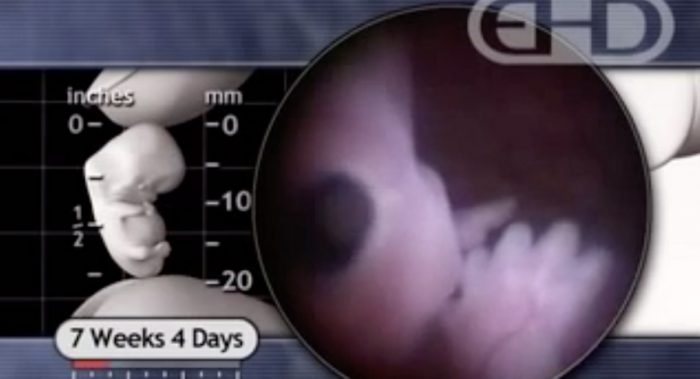
7 week embryo (Endowment for Human Development)
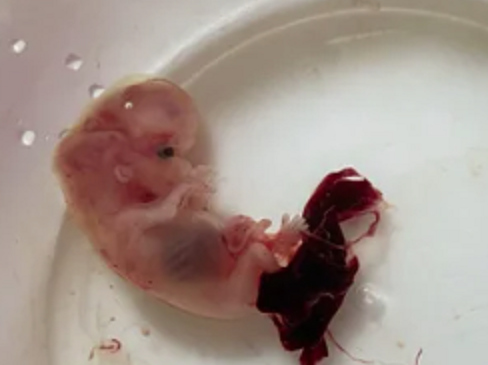
Reddit user BackgroundPea7785’s photo of aborted baby at 9 weeks gestation (enlarged).
Abortion ends a human life
The Washington Post claims that in creating “Baby Olivia,” Live Action is attempting to ‘manipulate people’s emotions rather than truly sharing science based facts.’ It also took issue with Olivia having a name. “[I]n doing so, the video is attempting to convince students that abortion means ending human life,” it said.
To put it bluntly, abortion does end human life. The being in the womb of his human mother is a living, growing, human organism — genetically distinct from his parents.
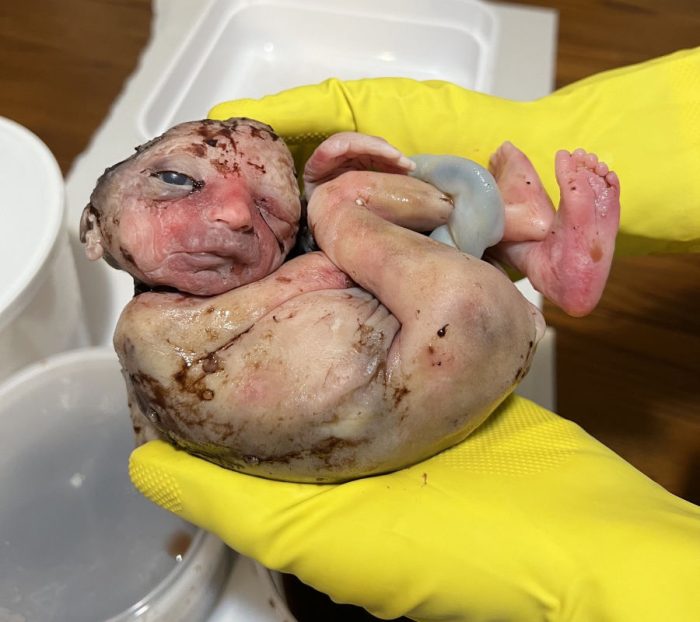
Baby Harriet, found in medical waste bin outside DC abortion facility. Photo courtesy of Progressive Anti-Abortion Uprising.
Above is a photo of Baby Harriet, whose body was discovered on March 25, 2022, in a medical waste box outside of Washington Surgi-Center abortion facility in D.C., about to be placed on a truck bound for Curtis Bay Medical Waste Services. She is believed to have been 28-30 weeks gestational age. It is unknown why she was aborted well beyond the arbitrary ‘age of viability,’ but there is no denying she is a human being. The same is true of Baby Christopher X, pictured below.
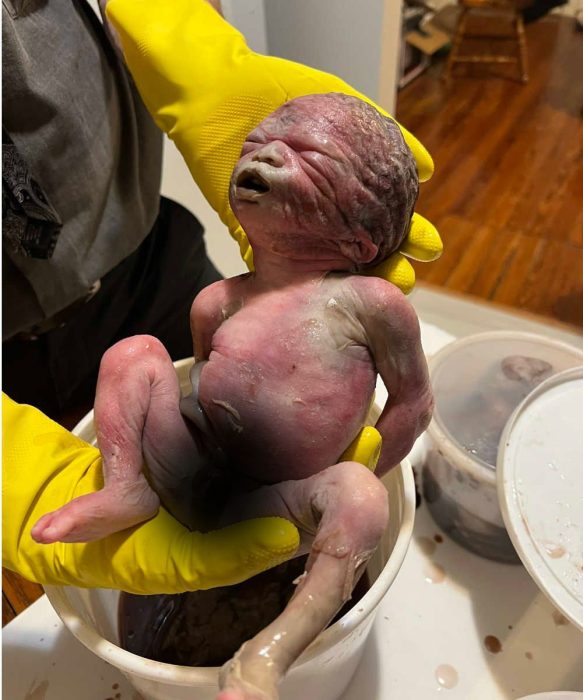
Christopher X was found in a medical waste box outside a DC abortion facility.
Christopher X was found in that medical waste box along with Harriet and 113 other aborted children.
None of these children deserved to be callously killed simply for existing. While there are physical and developmental differences between human embryos or fetuses and newborn babies, children, and adults, there are no moral differences as The Washington Posts attempts to argue.
A human being is a human being no matter the stage of her development, what day her heart begins to beat, whether she is ‘playing’ in the womb, or the number of days she has lived.

